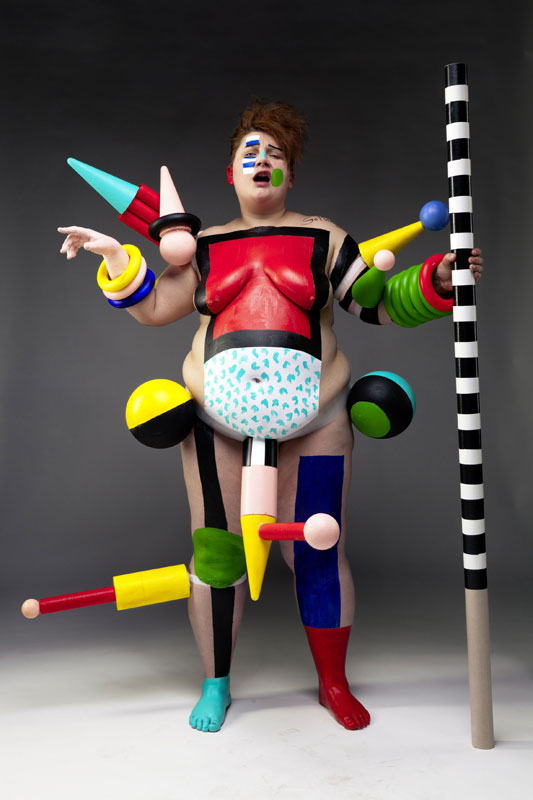6.08.–18.09.2011
Wiener Glut. New Art from Vienna and Düsseldorf

Jakob Lena Knebl, amore ettore, 2011, Foto: Georg Petermichl
“The curly-haired torcher bit the leg of the bat toilet-lady because she wasn’t wearing Hoffmann pattern clothes” (“Der Krausfakler hat die Fledermausabortfrau ins Bein gebissen weil sie keine Hoffmannsmusterkleider trägt.“)
Oskar Kokoschka: Letter to Erwin Lang, in the Agathon-Almanach auf das Jahr 48 des 20. Jhs. Edited by Leopold Wolfgang Rochowanski, Vienna, 1947
Anna Barfuss, Verena Dengler, ___fabrics interseason (Wally Salner, Johannes Schweiger) in cooperation with Robert Gassner, Julian Feritsch, Moritz Fiedler, Julia Hohenwarter, Luisa Kasalicky, Jakob Lena Knebl, kozek hörlonski (Peter Kozek, Thomas Hörl), Roberta Lima, Christian Mayer, Saskia Te Nicklin, Hans Scheirl, Nadim Vardag, Astrid Wagner, Alexander Wissel, Franz Zar
The quote in the subtitle may be puzzling to the non-Viennese, but it contains all the right words to evoke a certain era and atmosphere: it mentions in one breath literature, architecture, the body, fashion and violence and alludes to the historical tendencies in Vienna in the days of the Wiener Werkstätte. Founded in 1903, the Wiener Werkstätte marked the movement of the applied arts in the direction of the visual arts. Josef Hoffmann, Kolomann Moser and Adolf Loos were the founders of this new model of representation, “which, for all its simplified decors and reform clothing, did not go into battle without putti and perfume” (Robert Müller). In the last analysis, however, the separation into applied and visual arts is purely a matter of definition. Depending on the art concept (and limits thereof) and the art production of the moment, art basically requires a certain craftsmanship and an application.



